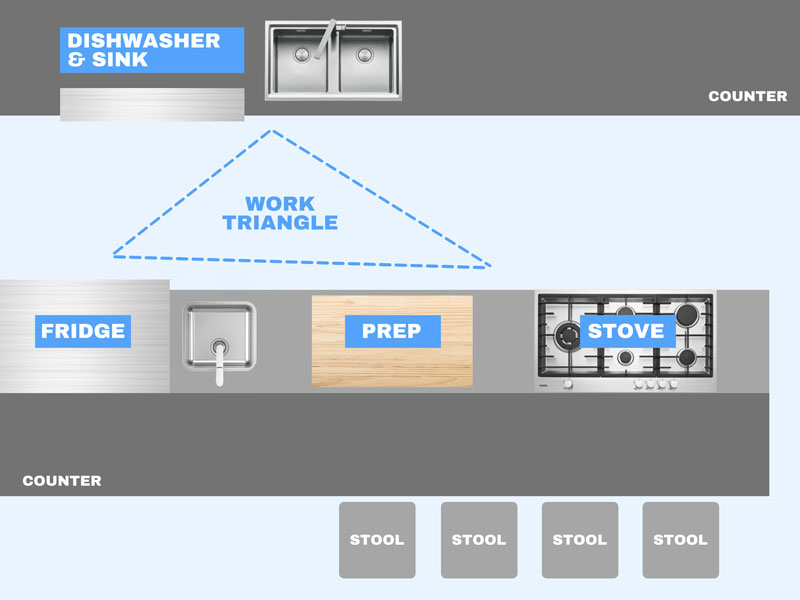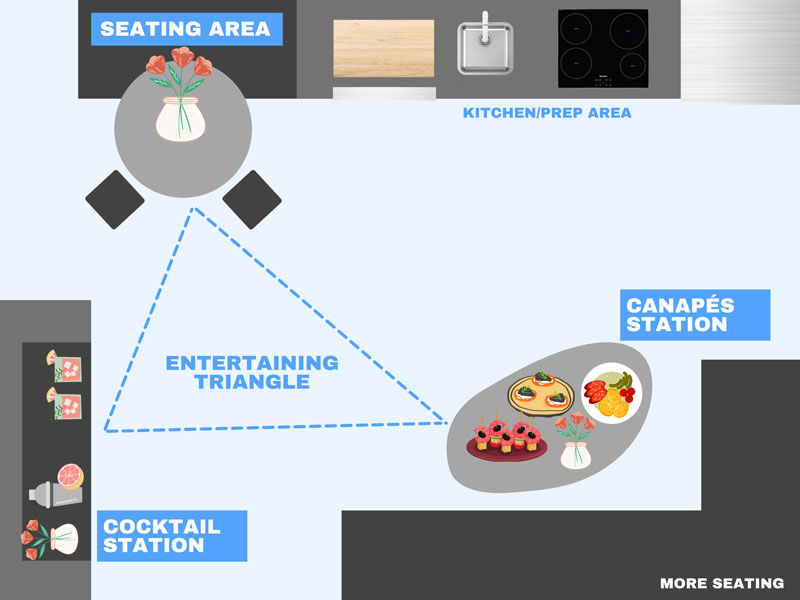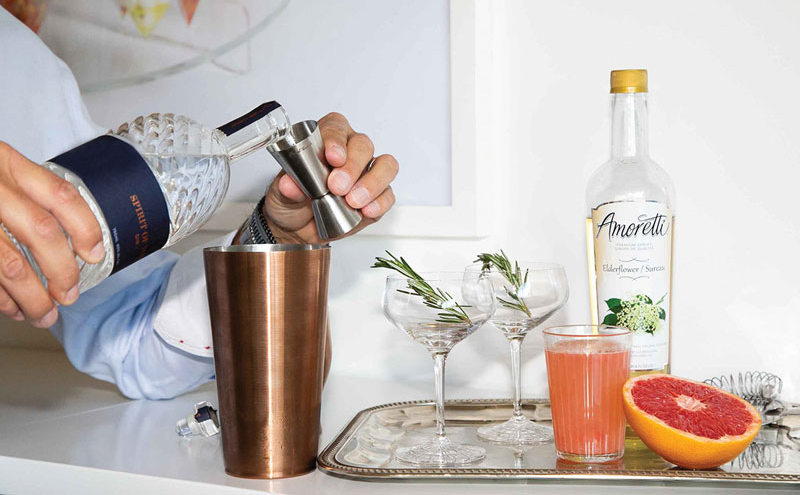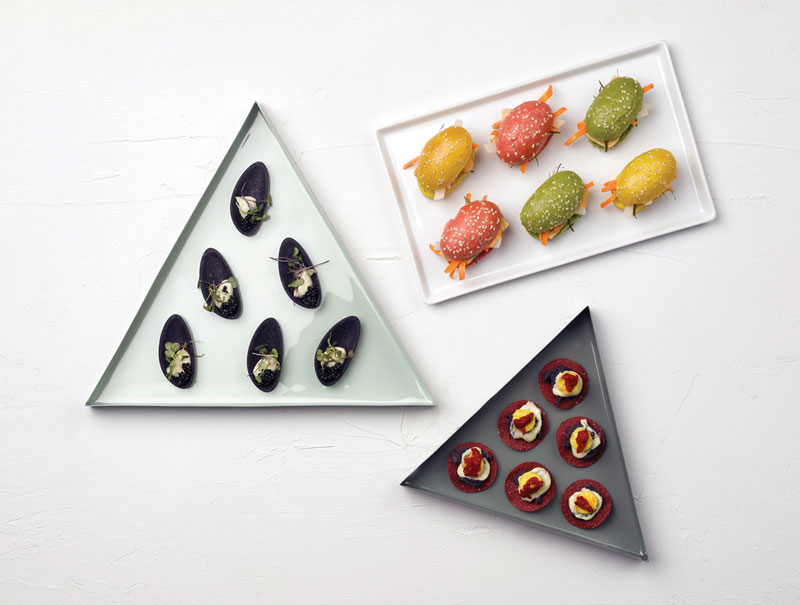A little planning goes a long way!
Sebastien & Sheila Centner, Canada’s leading entertaining power couple, teach us how to become hosting experts
Ditching Dining Room Culture
The kitchen in most homes is a hub of activity, whether yours is constantly busy with cooking aromas permeating throughout the home or simply because it happens to be where everyone crosses paths as the bustle of the day starts before each person rushes off in their own direction.

Today’s kitchens, however, are about more than just cooking and are quickly becoming the focus of the home and more multifunctional than ever, as kitchen design moves away from closed utility-like space and towards open-concept spaces that link together the living room, dining room and more.
Ever notice that no matter what size your kitchen is everyone seems to gather there? This is an amazing way for the host and hostess to be part of the mingling and conversation even while preparing and prepping food and drinks. The saying “the party always ends up in the kitchen” has never been more true, as entertaining moves away from traditional living rooms and dining rooms and into a more fluid setting of the modern kitchen environment.
Your Kitchen As Entertaining Space
The evolution of kitchen space planning has opened up so many great opportunities with how your kitchen can become the centre of activity. Whether you include a counter with stools that serves as a breakfast spot in the mornings but later becomes a great spot to mingle over cocktails in the evening, or whether you combine your living room and kitchen so family and friends can banter back and forth, the fundamental concept to designing your kitchen’s entertainment zones.

Keep in mind that these guidelines are neither rules nor laws. Frankly, we are going entirely on our personal experience of what has worked for us in our homes, so feel free to adapt these recommendations to suit your daily life and your type of entertaining.
Much like the ‘kitchen-triangle’ concept which helps plan out work space and clear traffic lanes by dictating that an ideal kitchen occurs when you draw a line from the sink to the stove to the fridge, zone planning for a kitchen needs to account for the differences each home may present, whether those are opportunities or challenges.
Questions to ask yourself when designing your kitchen for entertaining include: Is my entertaining more casual, formal, sit down or buffet-like? How many people do we normally host? Are we comfortable with people watching us cook and prepare? Are we comfortable with guests helping themselves? All of these questions and more will help you define the priorities of your space.


Zones can include the main prep space of your kitchen (where the work takes place), the storage space (where pantries, cupboards, fridges and perhaps a wine cooler are positioned), the viewing space (where guests and family can sit or stand while interacting with the host or hostess), the casual nook with lounge chairs or a large ottoman (while separate from the kitchen must have a direct line of sight and not be too far away so as to impede or obstruct conversation between the two spaces), the dining area (which often is removed from the kitchen space but more and more these days is open to or connected to the kitchen).
Deciding on where each of the zones will go and how they work together is key to creating a fluid and comfortable space that is also efficient. Once you find the right zones and traffic patterns in your space, it will make entertaining much easier as you simply repeat the same layout time after time for any holiday or occasion.
‘Pro Tips’
While the physical layout of your entertaining space may be the foundation, how and where you place items will set the tone and direct the flow of each gathering. Here are some of our favourite tips when it comes to setting up for entertaining:

- Separate the bar from the food to help avoid overcrowding while also encouraging movement and flow.
- Never set up a bar near the entrance of the home or somewhere that requires guests to walk through the kitchen. Either of these spots will generally cause bottlenecks (excuse the pun) as everyone congregates around the bar.
- Consider if space is tight, or your group is large, offering batched or pre-made cocktails which can easily be served to guests as they arrive for that extra little ‘chic’ touch.
- When placing grazing platters or stations, make sure to place them somewhere convenient and ideally in a position where guests can help themselves without leaving the main entertaining area. The idea of putting the smoked salmon platter in the dining room just because there’s room will undoubtedly lead you to move it eventually or, even worse, throw it out at the end of the night when it remains virtually untouched.
- For a cocktail party where you might be serving canapés, we recommend using a few classic platters or trays to serve them on. Set the canapé trays up on your kitchen counter, island, coffee table or any other surface that feels inviting for your guests! If you’re entertaining in a large space, try spreading the canapés out so your guests always have something to eat nearby.
- Consider your menu mix of warm, cool and room-temp items – having too many items that require warming or need to be kept chilled will keep you hustling in the kitchen all night instead of enjoying time with your guests.
- Florals and candles displayed in groups/bunches can help show your guests you’ve put in the extra effort while also serving as a road map showing your guests where to gather. For this reason, arrangements should be strategically placed at the bar, by the seating areas, and in any areas where food is presented.
- Florals for cocktail parties don’t need to be elaborate. Simple and inexpensive greens with perhaps a single stem or two is enough to add a touch of elegance to the environment.

While it may sound overwhelming, spending a little time planning out your space, whether physically or just around placement of food and drinks, will improve the flow of your entertaining by leaps and bounds.
